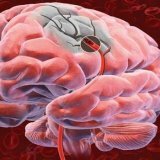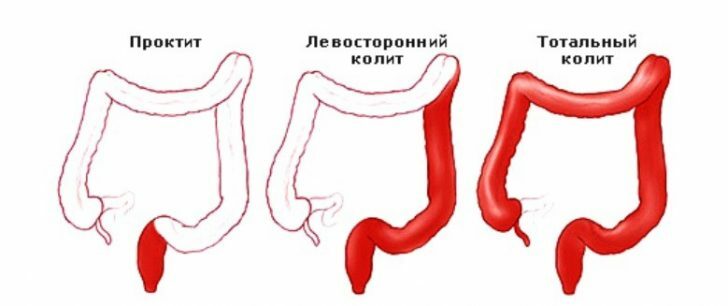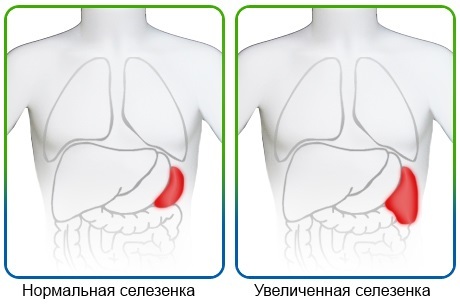Treatment of acute impairment of cerebral circulation

Treatment of acute cerebral circulation disorders consists in the destruction of the causes of stroke, as well as in the prevention of disease and rehabilitation of patients who have experienced a stroke.
In order to fight the disease, you first need to know what is causing it. Possible causes of cerebral circulation disorders are often cerebral atherosclerosis, heart failure or hypertension. Therefore, to take measures to prevent stroke, it is important to first find out everything about the disease.
If obstruction of vessels occurs due to detached atherosclerotic plaques of cerebral vessels or blood clots from blood vessels, then this is an ischemic stroke.
Hemorrhagic stroke occurs due to rupture of the cerebral vessel. When atherosclerosis, the walls of the vessels are uneven, and ruptures often occur in the most thin places. Because of the rupture, blood under pressure fills the cavity of the brain.
Symptoms of cerebral circulation disorders.
With ischemic stroke, the patient feels a sharp pain in the head, like a piercing blow with a dagger. From severe pain a person can scream or immediately lose consciousness. If he remains conscious, the cry may be accompanied by severe convulsions of the limbs. The next signs are braking, as well as attacks of vomiting and nausea. After a person regains consciousness, he has no paralysis and paresis, which often occurs with a hemorrhagic stroke.
Symptoms of stroke caused by ischemia are not as pronounced as in hemorrhagic stroke. But they can grow and progress for a long time. In addition, they are not always expressed at the initial stage, so patients often too late seek help.
Hemorrhagic stroke is often accompanied by high blood pressure. The patient either feels a strong and growing pain in one part of the head or loses consciousness. He may experience breathing problems, as well as vomiting and redness or blue hair. Depending on where the hemorrhage occurred, other symptoms also appear. If the right side of the brain is affected, the patient has problems with speech, and if left - the patient has memory problems, he does not know who he is, does not recognize his family, serious mental disorders are observed. When the hematoma enters the brain stem, the patients fall into a coma, and basically live no longer than two days.
If the patient exhibits symptoms, like a bleeding in the brain, and then abruptly disappear, it means that there was no stroke, but there was a situation where it was possible. In any case, you need to contact the doctor for help in order to take measures to prevent stroke. Such a patient should monitor his health, since the possibility of a stroke is even greater than the real one.
First aid for the onset of symptoms of acute impairment of cerebral circulation.
If you have symptoms of the disease, you should immediately call an ambulance. Before her arrival, you need to monitor the patient's condition: lay it horizontally, remove dentures and ensure that vomit does not enter the respiratory tract.
Use ammonia alcohol is strictly prohibited - it can cause breathing problems. The patient needs to ensure the influx of fresh air, that is, open the window, unbutton the clothes.
If the victim has stopped breathing or palpitations - it is necessary to perform respiration "mouth to nose", "mouth to mouth" accordingly, and also to do heart massage.
Treatment of cerebrovascular disorders.
The treatment of a patient in an acute period of the disease is mainly to support the life of the patient and prevent various complications, such as the occurrence of pressure sores, the prevention of thrombosis, the inflammation of the lungs and further bleeding.
When transferring hemorrhagic stroke, first of all, you need to stabilize blood pressure, stimulate the heart, control homeostasis. To do this, oxygen masks and pressure chambers, catheterization of the bladder, introduction of the nasogastric tube with dysphagia will do.
With intensive treatment of a patient, it is necessary to constantly massage him with limbs to prevent thrombosis.
For prophylaxis of pressure sores, the patient needs to turn several times a day from side to side, lubricate the skin with camphor oil and special medical devices intended for the prevention of pressure sores.
If the condition of the victim worsens, it must be transferred to artificial ventilation of the lungs or maintenance of cardiac activity, respectively.
Prevention of recurrence of cerebral circulation disorders.
Prevention of such diseases as a stroke is simply necessary. Thanks to her, many lives have been saved, and the mortality from this disease has declined significantly among both women and men around the world. But the greatest amount of funds for the prevention of cerebral circulation is observed in the US and Australia, where the mortality rate has almost halved.
Prevention for stroke is the timely treatment of diseases such as cardiac and vascular disorders, hypertension, the implementation of dietary advice and the regime of the day.
In case of stroke, the patient is prescribed indirect anticoagulants or aspirin. Although modern medicine practices the use of aspirin at first, and then anticoagulants.
The patient is also referred for cardiac therapy to improve cardiac activity and eliminate hypertension.
In the prevention of ischemic stroke, one must constantly monitor the pressure and electroencephalogram. And with hemorrhagic stroke also need to monitor blood pressure, but there is also a need for antihypertensive therapy.
Modern treatment of acute circulatory disorders is the preliminary diagnosis and therapy of the disease. And the reception of funds and the method of treatment is selected individually for each patient.



